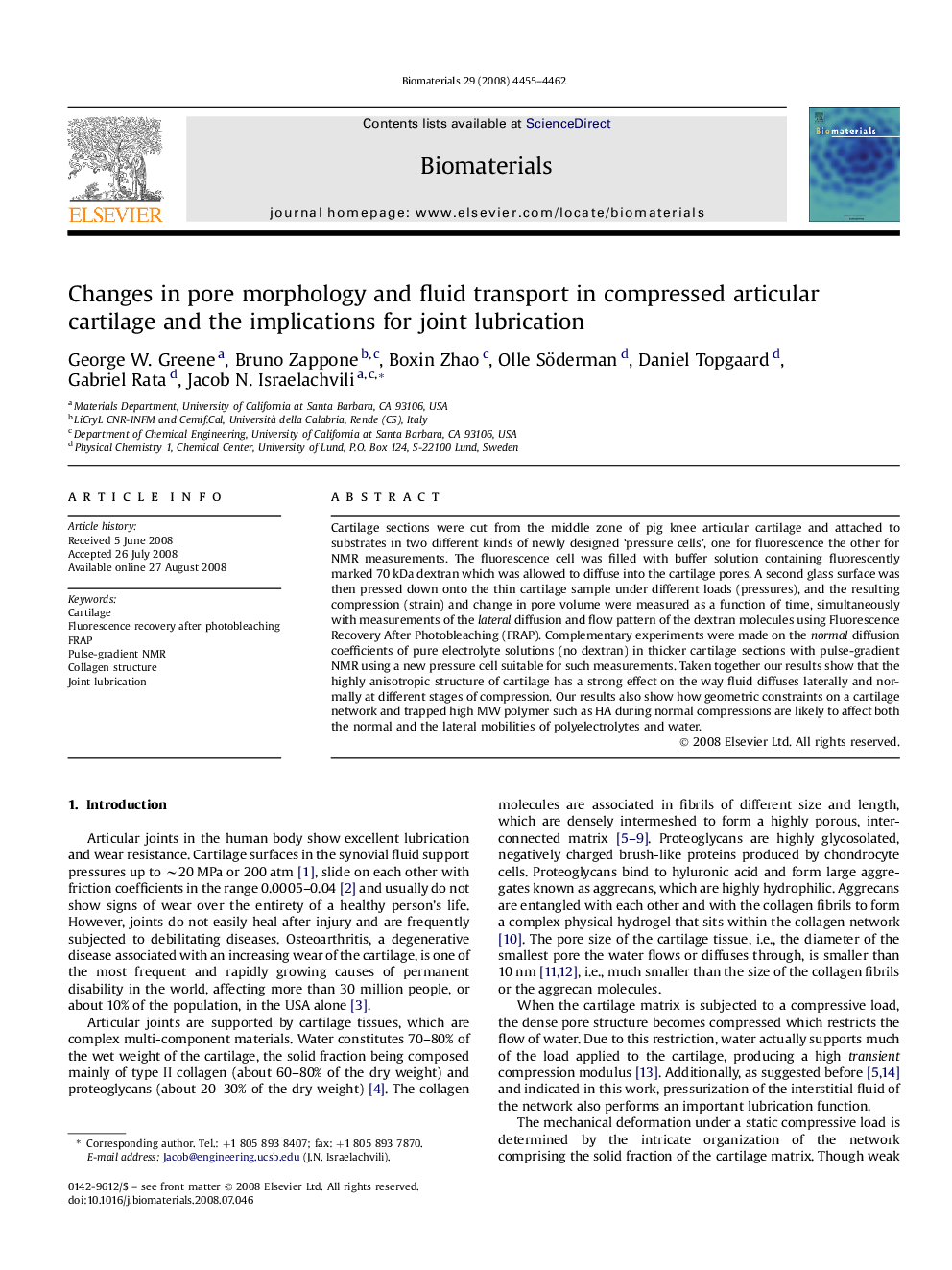| Article ID | Journal | Published Year | Pages | File Type |
|---|---|---|---|---|
| 10289 | Biomaterials | 2008 | 8 Pages |
Cartilage sections were cut from the middle zone of pig knee articular cartilage and attached to substrates in two different kinds of newly designed ‘pressure cells’, one for fluorescence the other for NMR measurements. The fluorescence cell was filled with buffer solution containing fluorescently marked 70 kDa dextran which was allowed to diffuse into the cartilage pores. A second glass surface was then pressed down onto the thin cartilage sample under different loads (pressures), and the resulting compression (strain) and change in pore volume were measured as a function of time, simultaneously with measurements of the lateral diffusion and flow pattern of the dextran molecules using Fluorescence Recovery After Photobleaching (FRAP). Complementary experiments were made on the normal diffusion coefficients of pure electrolyte solutions (no dextran) in thicker cartilage sections with pulse-gradient NMR using a new pressure cell suitable for such measurements. Taken together our results show that the highly anisotropic structure of cartilage has a strong effect on the way fluid diffuses laterally and normally at different stages of compression. Our results also show how geometric constraints on a cartilage network and trapped high MW polymer such as HA during normal compressions are likely to affect both the normal and the lateral mobilities of polyelectrolytes and water.
